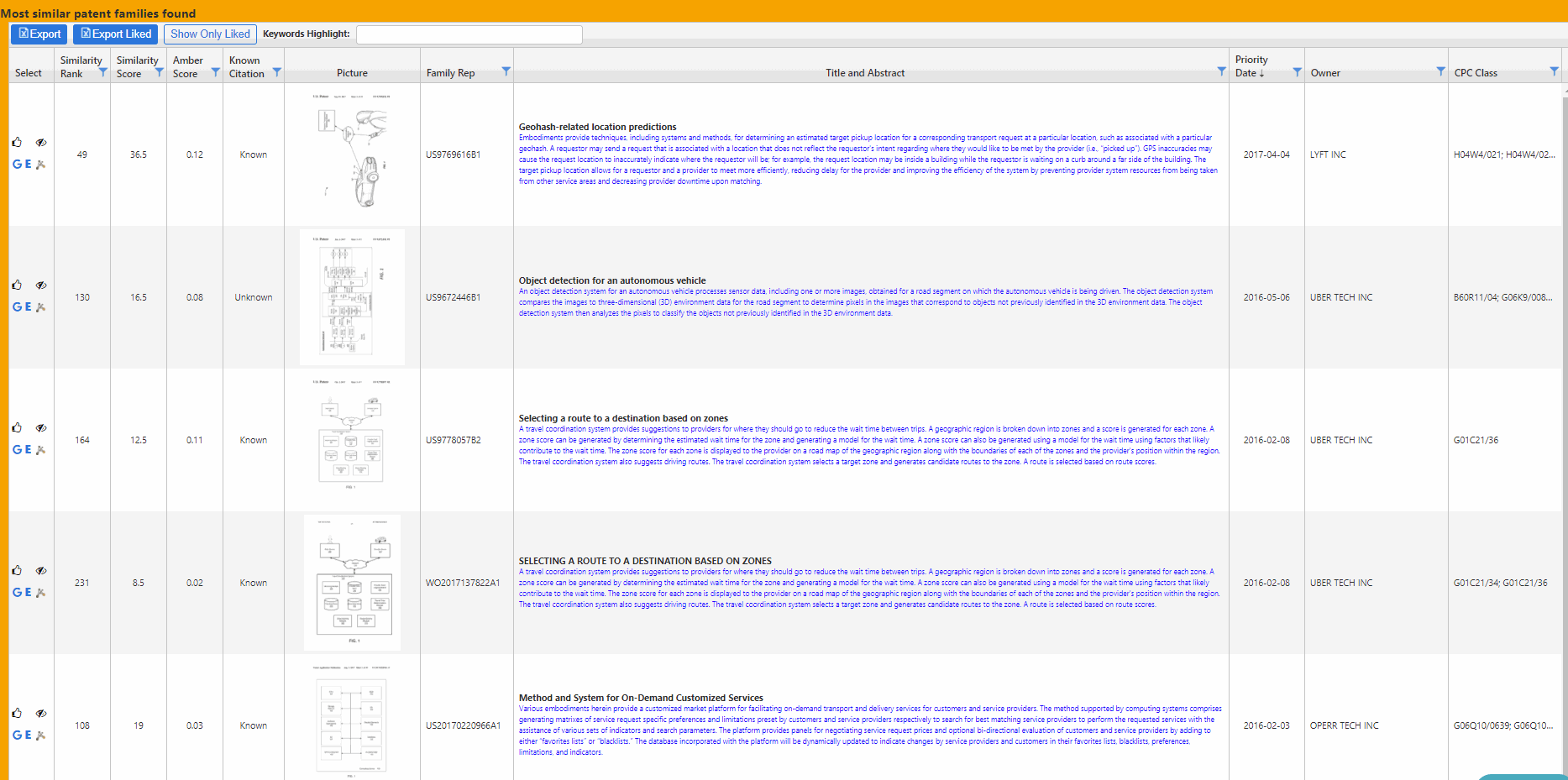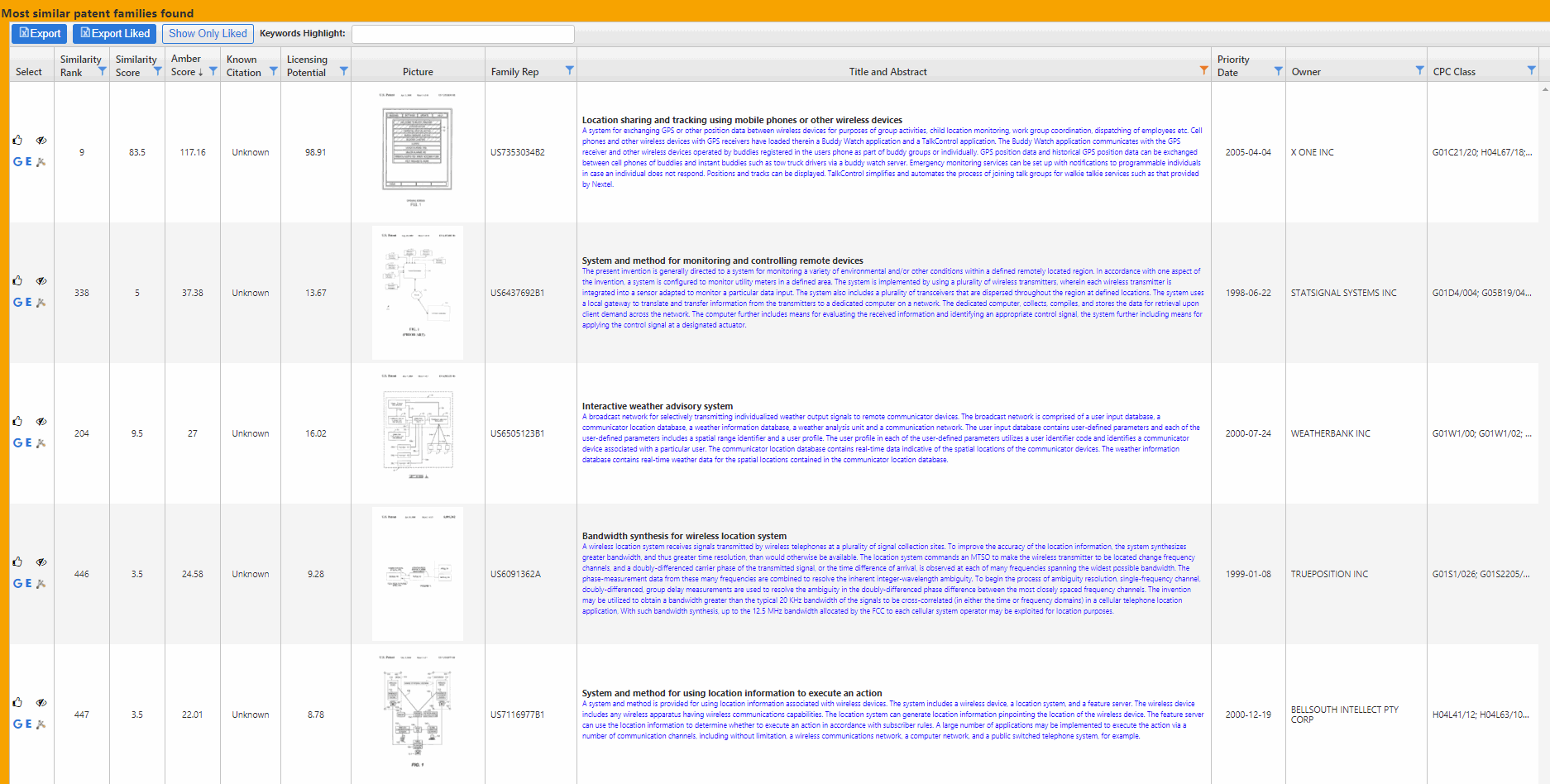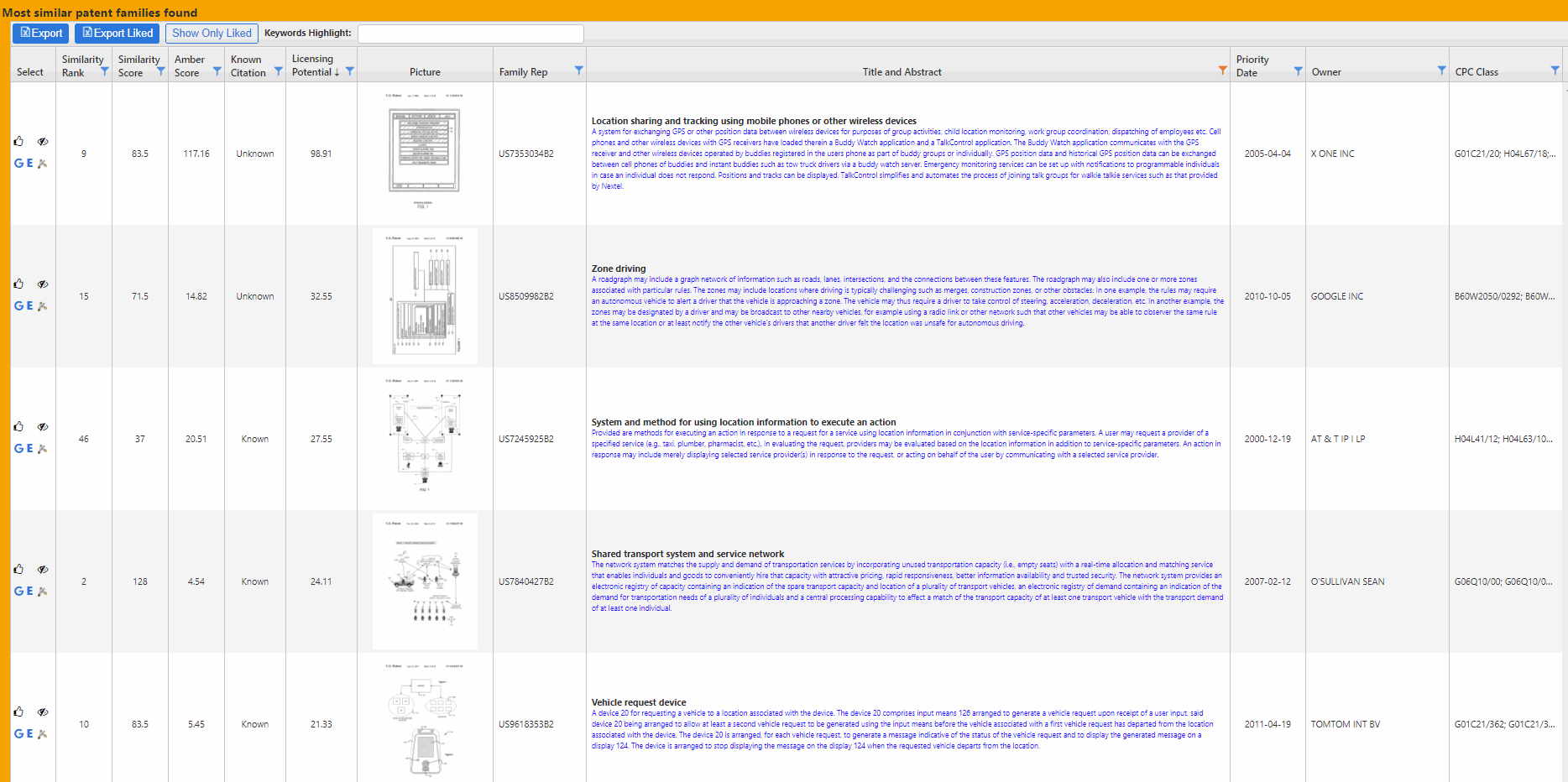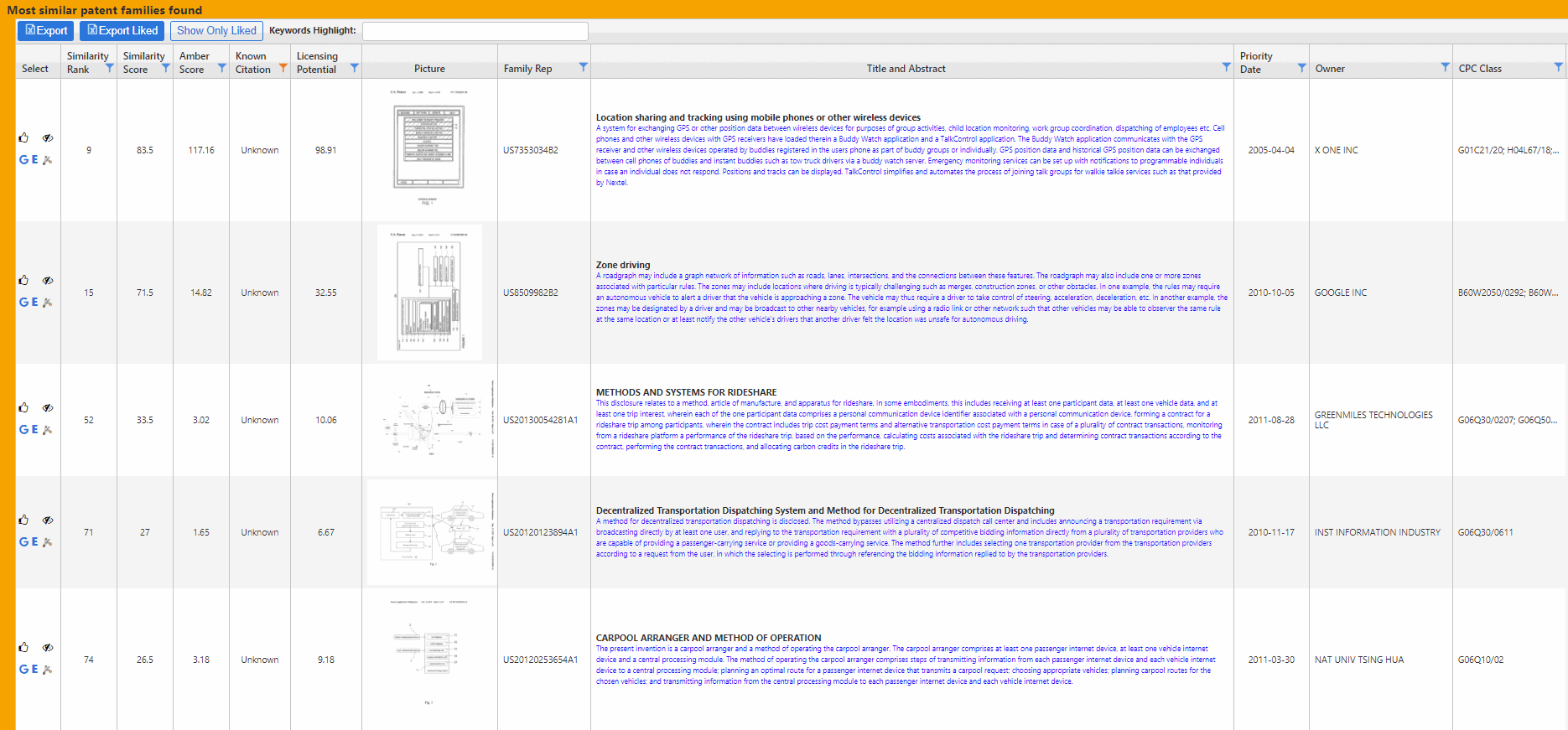Uber is buying patents. What should they be looking for?
Ride sharing app Uber is currently in the market to buy some more patents to "support our expanding business", and this program is happening right now.
Uber is soliciting offers from patent owners, and on a final offer price basis, ie. vendors set a price, and Uber will make its decision on the basis of the offered price. For further details of this program, please read more here.
Waiting for vendor offers is one way of locating relevant patents, but there are others. To make finding such patents as simple and as robust as possible, Ambercite has developed Cluster Seaching, which can find the most similar patents* to one or more patents* (*in fact patent families). We can run this analysis for up to 200 patent families.
So what can Cluster Searching tell us about the most similar patents to the Uber portfolio?
To find the Uber patent portfolio, we ran a applicant query in the patent search database Patentlens, which provided a list of 215 patents in 76 separate families. We entered representative patents from each of these patent families into Ambercite Ai, (while this was a fairly simplistic means of finding Uber owned patents, this was sufficient for the purposes of this blog).
We also decided to restrict this search to patents with priority dates of after January 1998, as these patents were more likely to be still legally active.
The search query looks like this (only part of the full list of inputted patents is shown):
And the results? We ended up with 500 patents as requested. The five most similar patents are shown below, but this is only a partial list of the most similar patents. Of these top five, none appeared to be owned by taxi companies.
Note that these are sorted by "Similarity' - the objective metric we have developed for ranking the similarity of patents found.
There are other ways of looking at this data. We could, for example, look for the most recently filed patents that meet this criteria. This area is still attracting recent filings.
We can also look at the five patents that have the highest "AmberScore", which is our unique metric for predicting the potential value of a patent based on its citation density. The average Amberscore value for all patents in our database is 1.0, and the higher the better - so there are very high scoring patents in the list below.
If we are looking for patents to acquire, both the similarity and the predicted importance as predicted by Amberscore may be relevant. Since both terms can be important, we have combined these terms in the calculated metric "Licensing Potential", or "L.P" for short. In the screenshot below, the patents are ranked accoring to Licensing Potential:
There is one more perspective worth looking at. Ambercite identifies similar patents based on citation based on advanced citation analysis. Other sources of patent information also offer citation analysis, but besides listing known citations, Ambercite can also use its advanced algorithms to find similar patents not recognised as direct patent citations to any of the listed patent. Yet these 'unknown' citations can still be highly relevant.
In the table below, only unknown citations are shown.
All of these unknown citations are all relevant to the Uber business model.
And what difference does this make? Within the list of the 500 most similar patents we found, 153 were recognised direct citations to the Uber patents, and 347 were not.
In other words, if you were use conventional citation analysis to run this query, you could miss over half of the potentially relevant patents.
>>>>>>
These are only screenshots of what is possible - all of this information can be exported in spreadsheet form suitable for further and more detailed review, or even import into other patent databases.
For example, by analysing the 500 patents in spreadsheet form, we are able to see that IBM are the holders of the most patents in the top 500 similar list (13 patent families) - and yes these patents are relevant, for example US2014007475 for "Estimating taxi fare".
Benefits
This process is fast and simple - but what could Uber, or indeed any other company looking to enhance their patent portolio do with this type of information?
Identify the greatest risks to their business
Systematically identify what could be the most valuable patents to their business - or which could block a competitor. These may be owned by large companies or individual inventors - and all types of owners may be potentially open to a deal.
Objectively rank the patents that are offered to them
All using a much more powerful citation analysis process than availalbe from other patent data sources - therefore providing a unique competitive advantage.
Similar benefits may also be gained by owners or investors of patents in this area, which could include a similar analysis based on their own patents.
Are you interested in recieving these sorts of opportunties for yourself? In that case, please contact us and we have you on your way to being in a stronger position to maximise the value of your intellectual property.







